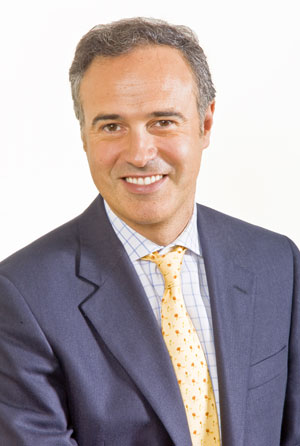Much has been said, and written, recently regarding the end of the “Golden Age” of fixed income. Since the late 1970’s, we have seen a continuous increase in bond prices, coupled with decreasing interest rates across all developed countries. However, since overcoming what was arguably the most catastrophic economic crisis to occur in the last 50 years in the United States, a gradual increase in the cost of money is to be expected. This increase will have a potentially significant impact on nearly every other financial asset and investors will be wise to understand these broad impacts on their own portfolios and investment strategies.
In the past, conservative investors, along with many traditional savers, were able to deposit their money in a highly-rated bank to earn a fixed interest rate, or invest in high-quality bonds and conceivably live off of the income generated from the interest with relatively little risk. Presently, and going forward, this will likely no longer be the case because the income generated by these fixed income related investments will not be sufficient to satisfy the cash flow and income requirements they may have previously provided. In addition, the historically low cost of money has led to a situation in which potentially negative real rates (when discounted for inflation) in the short- and intermediate-term, may become reality.
So, we find ourselves in a new age requiring a modified framework for how to invest capital and achieve returns commensurate with objectives.
Faced with this situation, investors are forced to look for alternative ways to invest their capital. The strategy most widely promoted by many banks and brokers, in the face of this challenge, is to generate income by allocating investments to stocks of publicly-listed companies that pay relatively high dividends. This comes with a commensurate increase in risk exposure to the equity markets – which over the long term will likely result in real growth, but over the short term could expose the investor to significantly greater volatility in portfolio values. This requires a significantly greater tolerance for risk than the historical strategy of achieving income through fixed income and bank deposit type investments. This opens the typical investor to the traps of behavioral finance, which lead them to let their emotions drive their decisions in times of crisis, and sell at precisely the wrong time, subsequently incurring a permanent impairment of capital.
Balancing yield, time, liquidity and potential return become ever more important for investors in light of these market conditions. In particular, the historical relationships between these factors that investors have relied on may need to be re-interpreted in light of current conditions. For instance, what has traditionally been viewed as a safer, more conservative investment could become, at least for the short term, riskier than other investment strategies. Fixed income strategies in particular may be subject to loss of capital and purchasing power, unlike what investors have experienced over the past 30 years.
It is in this context that we have begun to look at private, illiquid investments as an important component of a family’s investment portfolio. Within private investments, we include investing in the private markets for both debt and equity, and across asset types that include real estate, operating companies, venture capital, etc.
Illiquid Investments
When we speak of investments which are illiquid, or private investments, there are generally three categories:
- Private equity in the most traditional sense. Private equity refers to investment in private (non-listed) companies with the objective to generate returns by providing resources, management expertise, a long-term strategic vision, and value purchases at ideal pricing. The investments of capital and resources ideally lead to value creation and attractive earnings within 5 to 10 years.
- Real estate. Within this group of investments there are several subsectors with differing levels of risk, liquidity and in many cases cash flows originating from leases. Diversifying between the local market and constantly changing opportunities in different international markets should also be taken into consideration.
- Credit markets. Within this categorization we include direct financing for firms, projects, and even governments, with fixed or variable interest rates which provide reasonable cash flows and potentially, capital appreciation.
Within this universe there exist several “sub-groups,” in venture capital – some which serve to support entrepreneurs starting a venture from scratch, and others which involve debt restructuring for companies in complicated situations, as in the case of financing acquisitions through debt (Management Buy-Outs).
The Action Plan
Our view is that including a diversified set of private investments sourced in the illiquid markets can add both income and capital appreciation potential to a family’s investment portfolio, as long as the trade off of having more illiquid investments is fully understood and vetted for each particular family and their objectives. This is particularly true as we look at the potential challenge of a lower-return public market environment (in both fixed income and equities) which is likely to be the case for the near to medium term.
Sourcing illiquid investments is not as straightforward as sourcing investment opportunities in the public markets. Information is harder to come by, evaluation of the investment strategy requires more time, understanding and negotiating the potential terms of investment can be more challenging, and assessing the alignment of interests between the opportunity “sponsor” and the investor is critical.
We have been seeing wealthy families adopting greater exposure to the illiquid, private investment markets with the objective of diversifying and increasing their returns and yields, relative to the apparently diminishing potential in the public markets.
By: Santiago Ulloa, Managing Partner, WE Family Offices


